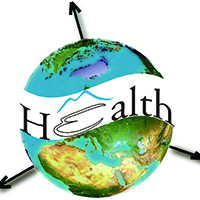Mapping the risk for transmission of urban schistosomiasis in the Brazilian Northeast

All claims expressed in this article are solely those of the authors and do not necessarily represent those of their affiliated organizations, or those of the publisher, the editors and the reviewers. Any product that may be evaluated in this article or claim that may be made by its manufacturer is not guaranteed or endorsed by the publisher.
Authors
This is an analysis of the risk of schistosomiasis transmission in the city of Recife in the Northeast of Brazil based on the number of schistosomiasis cases (Schistosoma mansoni) registered for the period 2007-2017 together with data resulting from active search of breeding sites of the Biomphalaria snail intermediate host. The analyses were performed using Kernel Density Estimation (KDE), SaTScan and Map Algebra methodology using human socio-demographic data and biotic and abiotic data from the snail breeding sites. Investigating 44 breeding sites resulted in a total of 3.800 snails, 31.8% of which were positive for S. mansoni DNA. These data were considered in relation to total of 652 schistosomiasis cases. The KDE showed two high-risk and two medium-risk clusters, while three significant clusters were identified by SaTScan. Combining these data with the Map Algebra methodology showed that all high-risk neighbourhoods had breeding sites with snails positive for S. mansoni. It was concluded that schistosomiasis transmission cannot be controlled without basic sanitation and sewage management in the presence of Biomphalaria snails. The technique of Map Algebra was found to be fundamental for the analysis and demonstration of areas with a high probability of schistosomiasis transmission.
How to Cite

This work is licensed under a Creative Commons Attribution-NonCommercial 4.0 International License.
PAGEPress has chosen to apply the Creative Commons Attribution NonCommercial 4.0 International License (CC BY-NC 4.0) to all manuscripts to be published.













